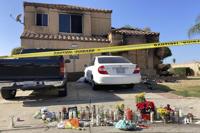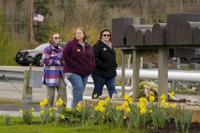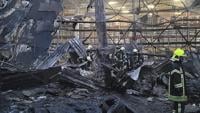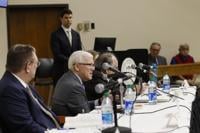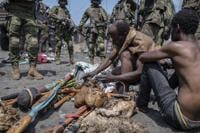A Justice Department report released Thursday details a myriad of failures by police who responded to the shooting at a school in Uvalde, Texas, when children waited desperately for over an hour before officers stormed a classroom to take the gunman down.
which was launched just days after the provides a damning look at the missteps by police after a gunman opened fire at Robb Elementary School. It was not a criminal investigation but one of the most exhaustive reviews of law enforcement's failure to stop the attack. Nineteen students and two teachers died in the shooting.
“The victims and survivors of the shooting at Robb Elementary on May 24, 2022, deserved better,” Attorney General Merrick Garland told reporters in Uvalde.
Local officials are still
Here are some of the major takeaways from the report:
THE MOST SIGNIFICANT FAILURE
The Justice Department concluded that the chief failure was that police didn't treat the crisis as an active shooter situation and engage the gunman quickly. Initially, several officers did approach the classrooms where students were trapped inside with the gunman, but retreated after he fired at them.
Law enforcement then treated the situation as if the gunman was barricaded, dead or otherwise contained, focusing on calling for more SWAT equipment and evacuating surrounding classrooms instead of engaging the shooter and saving lives.
“First responders on the scene, including those with specific leadership responsibilities, did not coordinate immediate entry into the classrooms, running counter to generally accepted practices for active shooter response to immediately engage the subject to further save lives,” the report said.
The report includes excerpts from a 911 call from terrified 9- and 10-year-old children trapped with the shooter while law enforcement waited just outside the classrooms. “I don’t want to die. My teacher is dead,” one of them said. At that point, the students and their teachers had been trapped in classrooms with the shooter for 37 minutes. It was another 13 minutes after the call ended before survivors were rescued.
There were numerous signs that should have prompted police leaders to send officers in sooner, the report states, including the victims' injuries and the gunman firing about 45 rounds “in law enforcement officer presence.”
"For 77 agonizing, harrowing minutes, children and staff were trapped with an active shooter,” the report said, “They experienced unimaginable horror. The survivors witnessed unspeakable violence and the death of classmates and teachers.”
THE RECOMMENDATIONS
The report includes a slew of recommendations, including that officers responding to such a crisis must prioritize neutralizing the shooter and aiding victims in harm's way.
“An active shooter with access to victims should never be considered and treated as a barricaded subject,” it says. Evacuations should be limited to those who are immediately in danger and “not at the expense of the priority to eliminate the threat,” the Justice Department said. And officers must be prepared to engage the shooter “using just the tools they have with them,” even if they only have a standard issue firearm, it said.
Garland said if law enforcement had followed best practices, “lives would have been saved and people would have survived.”
Other recommendations address coordination between agencies responding to shootings, the release of information to the public, and providing proper support and trauma services.
ERRORS COMPOUNDING TRAUMA
The Justice Department also outlined failures in communication, including instances of incomplete, inaccurate or disjointed releases of information that led to lingering distrust in the community.
The report cites the county district attorney telling family members that authorities had to wait for autopsy reports before death notifications could be made. Family members who had not been told that children had died, yelled back: “What, our kids are dead? No, no!”
Other examples included injured children, some with bullet wounds, being loaded onto a bus as the building was being cleared; parents spending hours removing glass shards from their children because they had not been screened before being released; an adult victim who was carried to a walkaway outside the school to receive medical attention who then died; and untrained hospital staff telling family members that their loved ones had died.
The report also highlights misinformation from authorities, including blaming a staff member for an open door that allowed the shooter to enter the building — later proving false. Some officers told frantic families that a shooter was in custody when that was not the case.
WHAT ARE VICTIMS’ FAMILIES SAYING?
Family members, many of whom had been briefed on the federal report before its release, had mixed reactions. Some told news outlets they were grateful that the federal investigation supported their criticisms, but many had hoped the report would include a recommendation for federal charges against those criticized most heavily.
President Joe Biden, when asked about the report Thursday, said the federal government would do its best to implement the recommendations, “But I don't know that there's any criminal liability.”
Velma Lisa Duran, whose sister was one of the teachers killed, told The Associated Press Thursday that she was grateful for the federal agency’s work but disappointed that local prosecutors have yet to bring any charges.
“A report doesn’t matter when there are no consequences for actions that are so vile and murderous and evil,” said Duran. “What do you want us to do with another report? ... Bring it to court,” she said.
___
Richer reported from Boston and Lauer reported from Philadelphia. Associated Press reporters Lindsay Whitehurst and Eric Tucker in Washington, D.C.; Jake Bleiberg in Dallas; and Acacia Coronado in Uvalde, Texas, contributed to this report.




